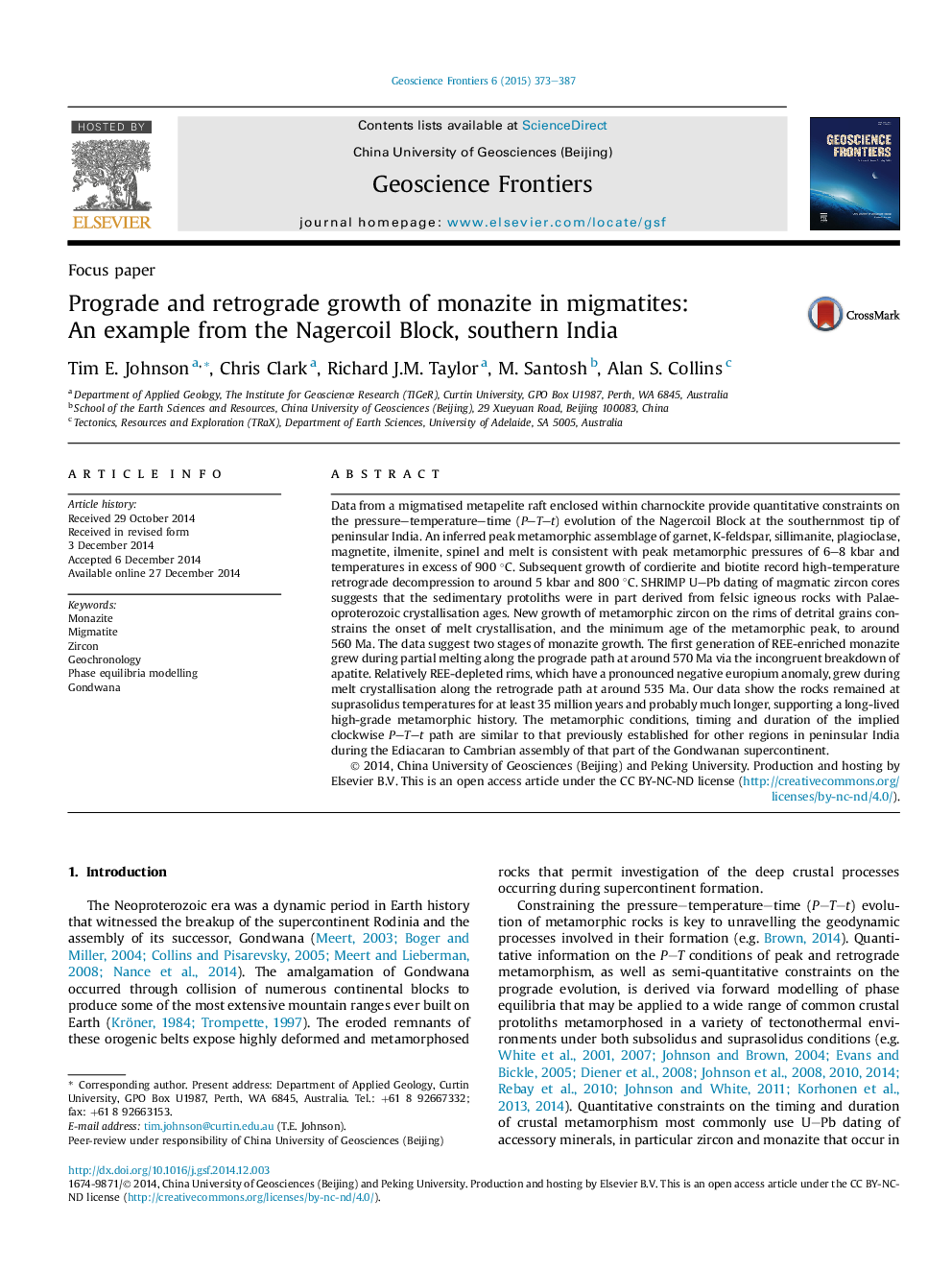| کد مقاله | کد نشریه | سال انتشار | مقاله انگلیسی | نسخه تمام متن |
|---|---|---|---|---|
| 4681617 | 1348862 | 2015 | 15 صفحه PDF | دانلود رایگان |

• Migmatitic rocks in the Nagercoil Block followed a clockwise P–T path characterised by high-T decompression.
• Metamorphic monazite grew both during the prograde and retrograde suprasolidus evolution.
• Prograde growth of monazite occurred via the incongruent breakdown of apatite.
Data from a migmatised metapelite raft enclosed within charnockite provide quantitative constraints on the pressure–temperature–time (P–T–t) evolution of the Nagercoil Block at the southernmost tip of peninsular India. An inferred peak metamorphic assemblage of garnet, K-feldspar, sillimanite, plagioclase, magnetite, ilmenite, spinel and melt is consistent with peak metamorphic pressures of 6–8 kbar and temperatures in excess of 900 °C. Subsequent growth of cordierite and biotite record high-temperature retrograde decompression to around 5 kbar and 800 °C. SHRIMP U–Pb dating of magmatic zircon cores suggests that the sedimentary protoliths were in part derived from felsic igneous rocks with Palaeoproterozoic crystallisation ages. New growth of metamorphic zircon on the rims of detrital grains constrains the onset of melt crystallisation, and the minimum age of the metamorphic peak, to around 560 Ma. The data suggest two stages of monazite growth. The first generation of REE-enriched monazite grew during partial melting along the prograde path at around 570 Ma via the incongruent breakdown of apatite. Relatively REE-depleted rims, which have a pronounced negative europium anomaly, grew during melt crystallisation along the retrograde path at around 535 Ma. Our data show the rocks remained at suprasolidus temperatures for at least 35 million years and probably much longer, supporting a long-lived high-grade metamorphic history. The metamorphic conditions, timing and duration of the implied clockwise P–T–t path are similar to that previously established for other regions in peninsular India during the Ediacaran to Cambrian assembly of that part of the Gondwanan supercontinent.
Figure optionsDownload as PowerPoint slide
Journal: Geoscience Frontiers - Volume 6, Issue 3, May 2015, Pages 373–387